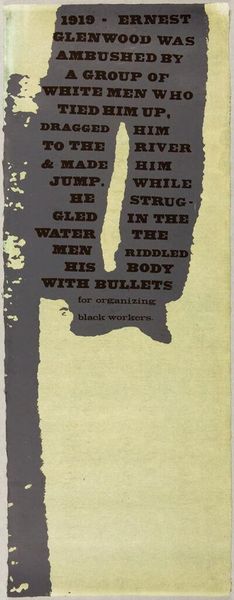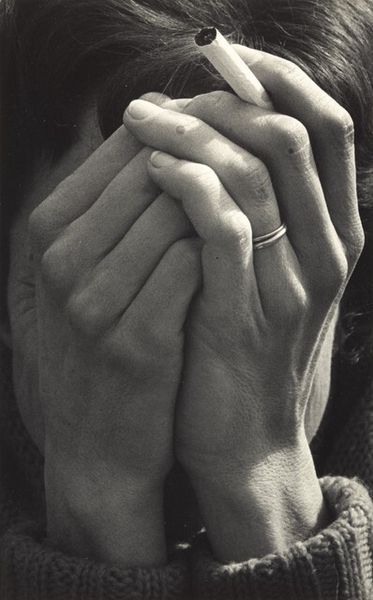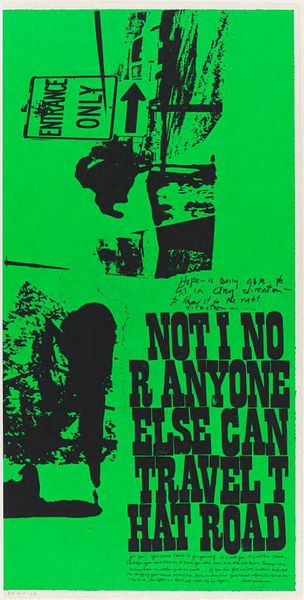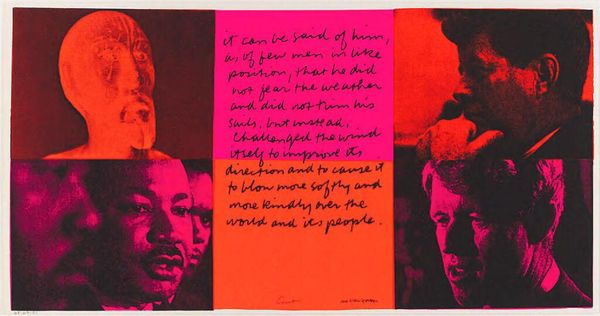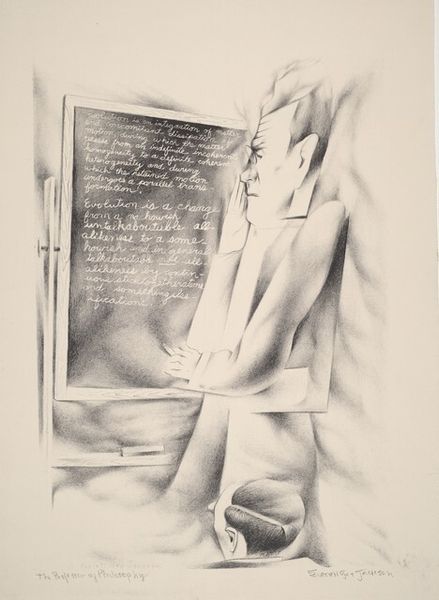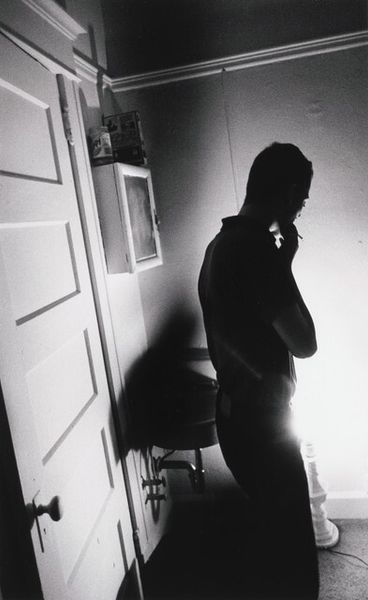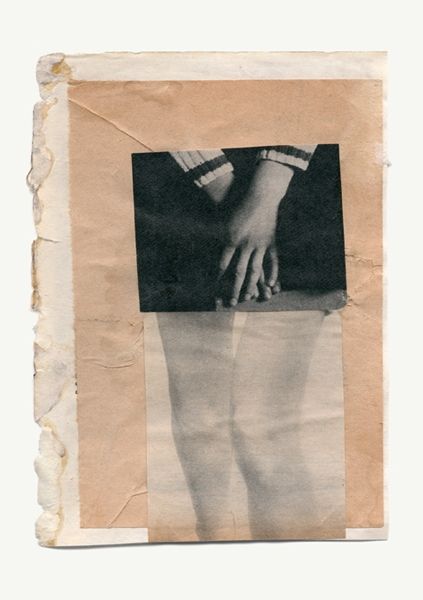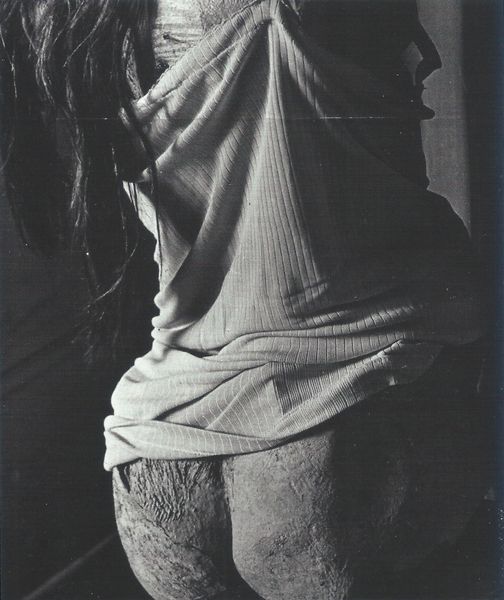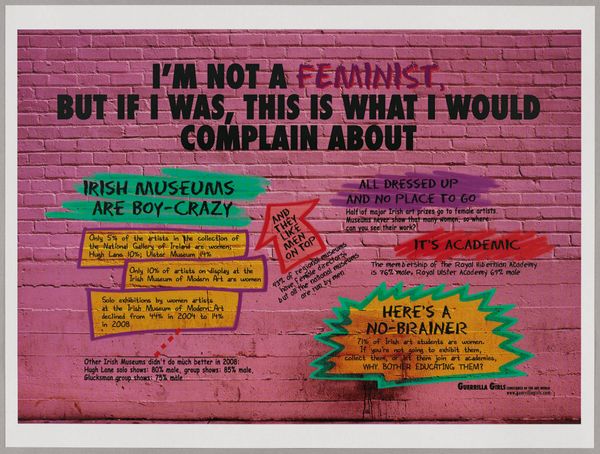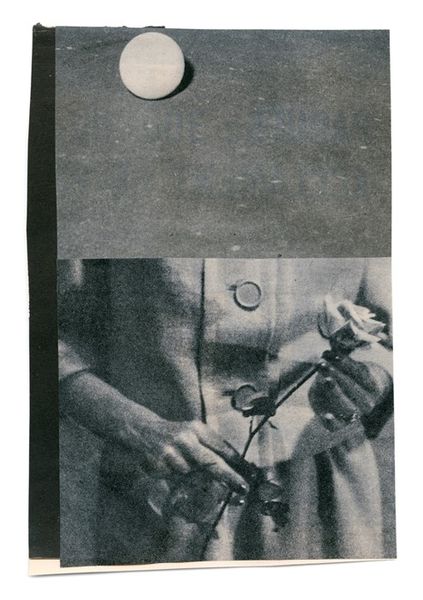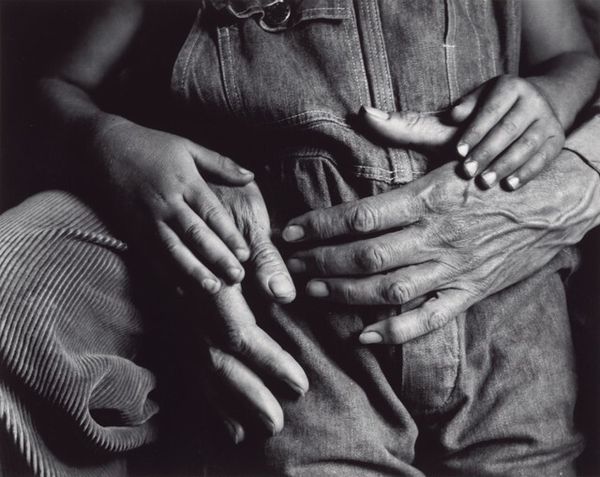
Copyright: Lorna Simpson,Fair Use
Curator: Here we have Lorna Simpson’s “Untitled (A Lie is Not a Shelter)” from 1989, a collage that layers photographic imagery with text. What are your first thoughts? Editor: It's stark. The black and white photography gives it a documentary feel, but the text overlay throws that off. It’s like seeing a memory fractured and then labeled, categorized with these declarative statements. Curator: Exactly. Simpson often plays with the relationship between image and text, challenging our assumptions. Here, we see a torso and arms, the figure's face is obscured, almost anonymous, wearing a simple white dress or top. And overlaid, those poignant, unsettling phrases, like a branding iron. Editor: The text really grabs you. “A promise is not a prophylactic” feels incredibly raw and of its time, considering the AIDS crisis. You can practically feel the desperation and misinformation hanging in the air. Simpson's material choices reflect that—the cold, detached photo juxtaposed with the stark lettering. It evokes that very specific late 80s minimalist aesthetic. Curator: It speaks to vulnerability, doesn't it? The figure’s posture, the way the arms are held, seems protective but also exposed. It makes you question what we use to shield ourselves, and the painful truth that these protections can be illusions. The Black Arts Movement heavily influenced Simpson; can we understand it as a commentary on race and gender? Editor: Absolutely. Consider the layering of materials, it's also an artistic choice with social implications. Simpson isn't just presenting an image; she’s dissecting how we perceive it. Photography as “truth” is exposed here as yet another crafted element in the ongoing dialogue surrounding identity, labor, and the politics of the body. Even the word choice, "shelter," "protection"—they’re loaded terms relating to resources and power. Curator: Indeed. Each viewing reveals a new layer of complexity. The beauty of Simpson’s work is that she isn't offering answers, she’s provoking us to question the very systems of power and protection we take for granted. Editor: Ultimately, it's the discomfort that lingers. It’s the material manifestation of societal fault lines and unfulfilled promises.
Comments
No comments
Be the first to comment and join the conversation on the ultimate creative platform.
